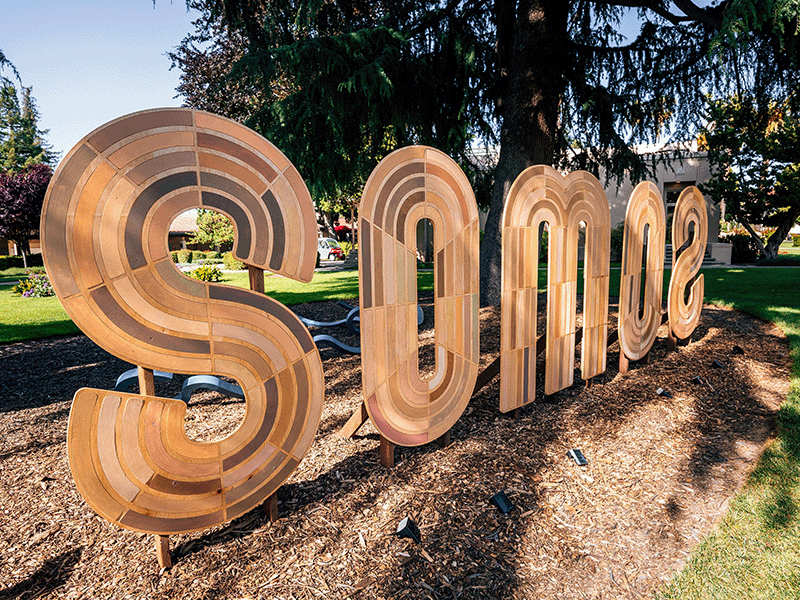
Visiting Artist brings Social Sculpture to Santa Clara University
Ana Teresa Fernández, 2024 SCU/Montalvo Arts Center Lucas Fellow, spread awareness of social justice issues through her engagement and collaboration with students, faculty and staff while on campus.
Santa Clara University/Montalvo Arts Center Lucas Fellow Ana Teresa Fernández is a multidisciplinary artist who uses performance, video, photography, painting, and sculpture to raise awareness of and bring life to important global issues. A Mexican-born artist currently living and working in San Francisco, Fernández is known for her powerful large-scale installations that address immigration and gender issues. She has painted sections of the border fence the same color as the sky, creating an illusion of the barrier disappearing into the landscape. In a video piece, she is immersed in a burial shroud underwater while wearing a pair of stilettos, emphasizing the role of gender in immigration.
As an SCU visiting artist the past quarter, Fernández presented lectures, performed studio critiques, and installed a social sculpture with the help of art students and the University community. Social sculpture, a theory developed by the artist Joseph Beuys in the 1970s, describes a kind of artwork that takes place in the social realm and requires social engagement, and the participation of its audience, for its completion. For the project, Fernández swapped leadership roles with the students— aiding them but letting them lead—so they might experience how accessible it is to do public art.
Fernández and her student team hosted three on-campus workshops where student, faculty, or staff participants were given the colors: blue, green, yellow, red, and white, and instructed to mix them to match their skin tone and paint a wooden tile. Dozens of the tiles were then arranged to form the text-based sculpture. Titled SOMOꙄ, which means “we are” in Spanish, the word is a palindrome, mirroring itself forward and backward. The sculpture also mirrors the SCU campus through its visual articulation of skin tone.
“Art can be a vehicle to talk about and address issues of race,” said Fernández. “By recognizing our skin tones all come from these five colors, no matter how light or dark, the historical judgments made about color are extracted and people get to visualize that everyone needs all the colors.”
Installed on the west lawn between the de Saisset Museum and the Mission, SOMOꙄ spans 25’ across and is 6’ tall. The scale is to remind students they are welcomed and accepted at SCU.
Fernández advises art majors, minors, and all students to “be earnest about what you're passionate about.” Let that passion drive you and it will come across clearly to your audience.
"We are immensely grateful to Ana Teresa Fernández for sharing her incredible talent, passion for social justice, and thoughtful insights with SCU this past quarter," said Takeshi Moro, chair of the art and art history department and associate professor of photography. "Her presence has been an invaluable experience, fostering creativity and inspiration within our campus community. We also extend our heartfelt thanks to Charmaine Warmenhoven, whose support has made this enriching artist interaction possible."